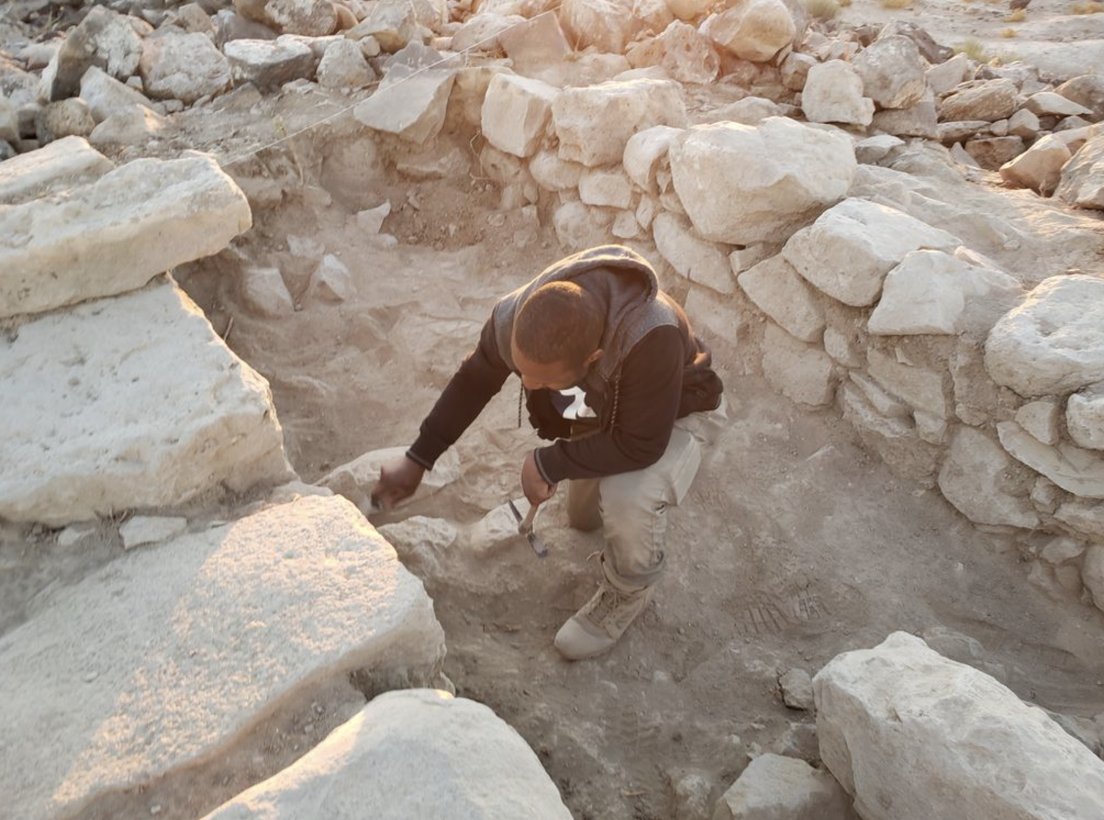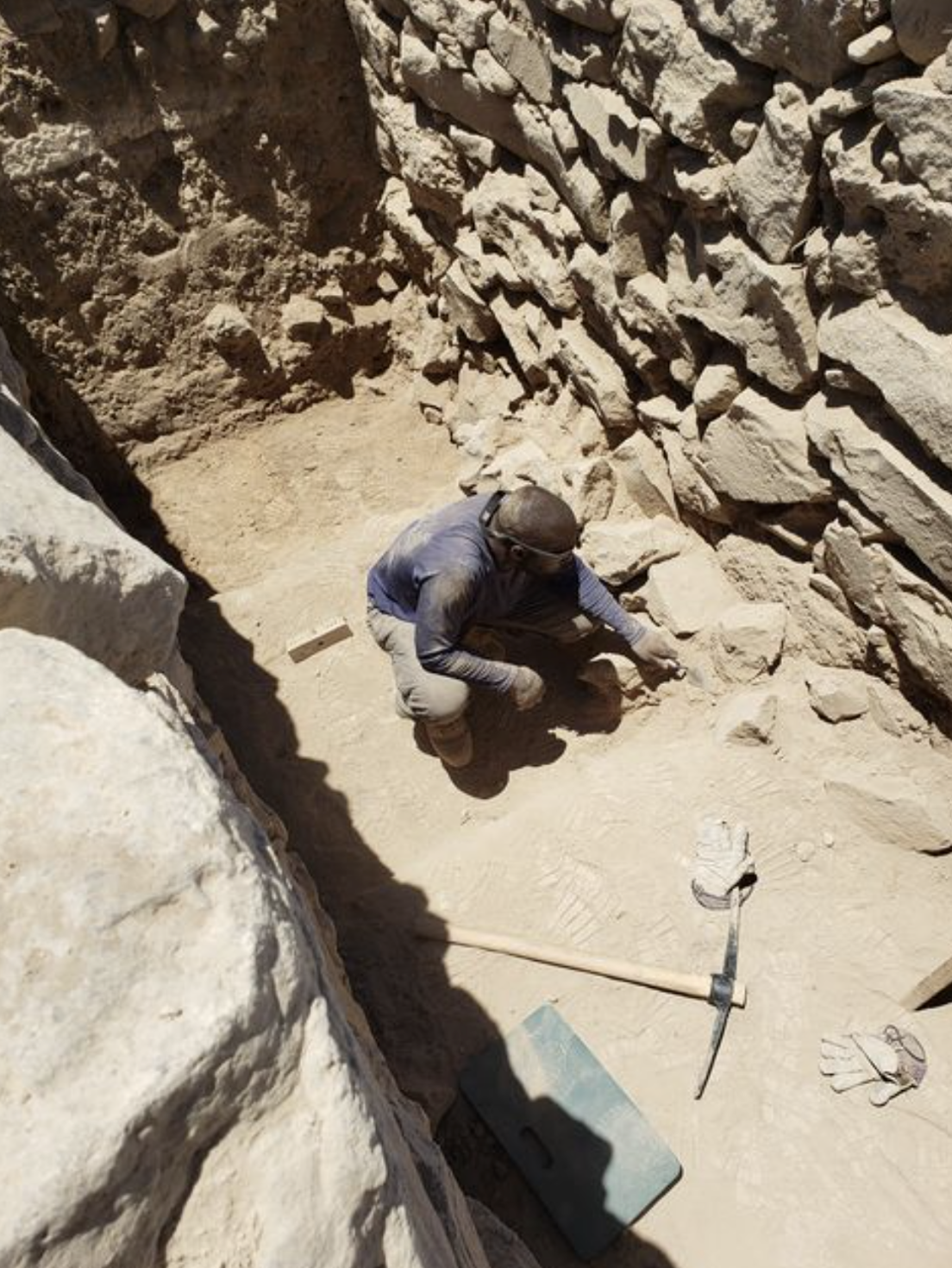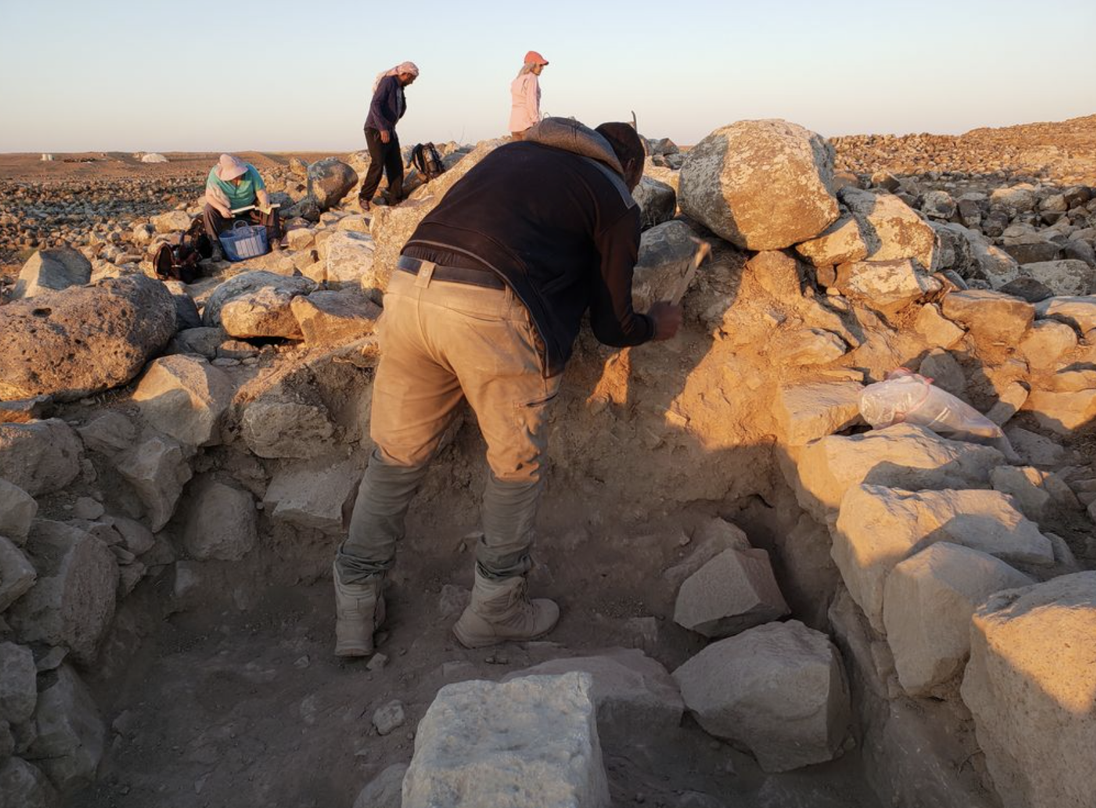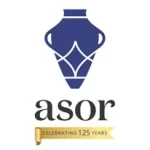
Finally, a Dream Fulfilled
Paul Richards, 2022 ASOR BIPOC Scholarship for Fieldwork Participation
Near East Archeology was a subject that, by title, I had not heard of until I started looking for a graduate degree covering ancient Israelite history. I knew archeologists went into the Middle East to do work, but I had not delved into more for the career field. After graduating from college with a BA in History I taught History in Cairo for 3 years at an American language high school. Then I taught ESL for 2 ½ years. While in Cairo I visited active dig sites. Visiting the sites sparked my interest in archeology.
When I started my Near East Archeology program at La Sierra University, I was excited for the upcoming dig. Because of the pandemic the normally scheduled dig season was canceled. I was determined to go the next season. By the time the next dig season came around the next year my finances were depleted. I applied for scholarships, and it is only due to being awarded the 2022 ASOR BIPOC Scholarship for Fieldwork Participation, that I was able to join the BRAP excavation trip.
The experience was great. I had been to Jordan on a 30-hour layover before where I took the opportunity and toured around the immediate Amman area. For the excavation I signed up for the full BRAP dig season for six weeks. Being in the archeology classroom learning about archeology and working in the lab was much different than being in the field. While in the field I remembered terminology I had learned in class. It was a continual task matching the term I had learned in class with the meaning or action in the field. The work was hard but every day we dug up something significant to me as a first timer. Finding pottery was exciting. I quickly found out the dig veterans were very used to seeing pottery finds. The schedule was taxing but the finds everyday made it worth it.
In the middle of the season, we went to Petra. I had heard of Petra for a few years and the reports from those who had visited made it sound like the ultimate travel destination for all Near East enthusiasts. Usually people exaggerate, this time the reports were accurate. It was better than going to Disneyland.
Archeology Becomes Personal
I grew up in and still am active in a distinct faith tradition. Previously my interest in ancient Israelite history had tilted my dig interest towards only going to Israel. I knew there was a lot to learn about ancient Israelite history from its ancient neighbors. Growing up myself in a culture and community where the stories of ancient Israel are accepted on a faith basis, it seemed almost automatic to gravitate towards Jerusalem. In a faith-based environment, especially for laypersons, activities of other ancient people groups are pushed aside and overlooked. It is a task of historians to help laypersons understand the study of Israel’s neighbors, and with proper archeology, enhance our academic understanding of faith-based stories.
The name Moab made a frequent appearance throughout the Old Testament of the Bible. A brief search rendered at least 18 times. The name originated, according to faith traditions, from one of the sons of Lot; Lot was Abraham’s nephew. The birth of Moab occurs in Genesis 19 along with his brother Ammon. The story includes some humiliating and salacious content. This son became the progenitor of the Moabites. The Moabites would become one of Israel’s major antagonists. King David in 2 Samuel 8:2 subjects the Moabites to servitude. Here again, a horrific scene takes place in the scripture tradition. In 2 Kings 3 Mesha King of Moab is mentioned as paying a heavy tribute to the Northern Kingdom. Mesha rebelled after the death of Ahab. The Mesha Stella, a significant find in Near East Archeology, describes a revolt against Israel.
Many inscriptions describing victory may have the veracity of the victory legitimately questioned. This is due to the well-known desire of kings and nations to embellish the greatness of themselves and their people. In the case of Mesha it does appear the inscription holds weight. The Mesha Stella was found at Tell-Dibon, a site our team was able to visit.
Cultural Memory And The Story of Moab
Cultural memory is a topic I have delved into since the beginning of my graduate program. The reality of stories becoming exaggerated results in the need for teachers and writers to execute proper exegesis when dealing with historical topics. Exegesis is a term primarily heard of in theology. But the principal for the term is crucial for every research field.
Preconceived ideas need to be erased before proceeding in the research. During the research process the evidence must speak for itself. In a textual context, a word can be assumed to have one meaning, then with further investigation the researcher realizes the original speaker or writer had a different meaning in mind. This also applies to archeology. As taxing as the physical aspect of archeology is, it is crucial to dispel private ideas and interpretations that can result from classroom and reading work only.
The public figures inside well-known faith traditions have become known for mobilizing their base with shallow motivation. This motivation is often very loosely based on ancient text references. Many public figures use the texts blatantly out of context for private purposes. There is a dual danger in the faith community. One is those who carelessly use history to further an agenda. The other are those who are born into these agendas unawares. Both continue to propagate a false narrative. The latter falls victim to its own cultural memory.
In certain faith-based texts Ruth is the progenitor of King David, Ruth 4:22. Ruth was the daughter in-law of Naomi who became a widow and decided to follow Naomi back to her homeland. There is a parallel story line outside the traditional faith-based text, which teaches Naomi’s other daughter in-law Orpah, a Moabite went back to her people and gave birth to Goliath a Philistine. Goliath has become the stuff of legend. His bio has been stretched to create a superhuman villain that would match today’s comic books.
And Finally
My time in the field has increased my interest in ancient languages. It has increased my interest in the facts of faith-based stories. While in the square my square mates and I had lively discussions over the topics presented above. By the end we were far from exhausting the matter. There will be more to debate and learn on the next excavation.
Paul Richards holds a BA in History and a Minor in Communication Art from Oakwood University in Huntsville, AL. He lives in Southern California and is finishing his thesis at La Sierra University in Riverside, CA. Balu’a Regional Archaeological Project (BRAP) – Centers & Museum – La Sierra University. BRAP Jordan (@brapjordan) • Instagram photos and videos. Balu’a Regional Archaeology Project | Facebook.
Latest Posts from @ASORResearch
Stay updated with the latest insights, photos, and news by following us on Instagram!
American Society of Overseas Research
The James F. Strange Center
209 Commerce Street
Alexandria, VA 22314
E-mail: info@asor.org
© 2025 ASOR
All rights reserved.
Images licensed under a Creative Commons Attribution-NonCommercial-ShareAlike 4.0 International License





